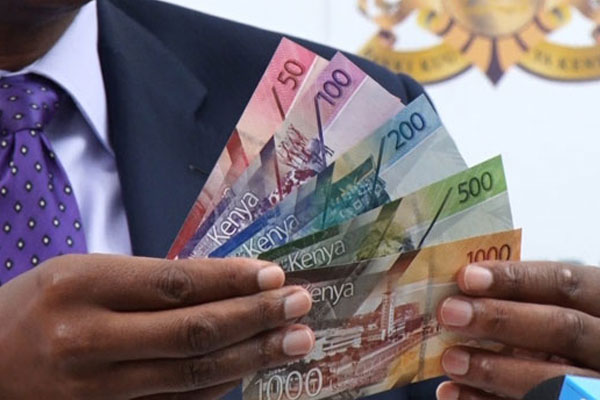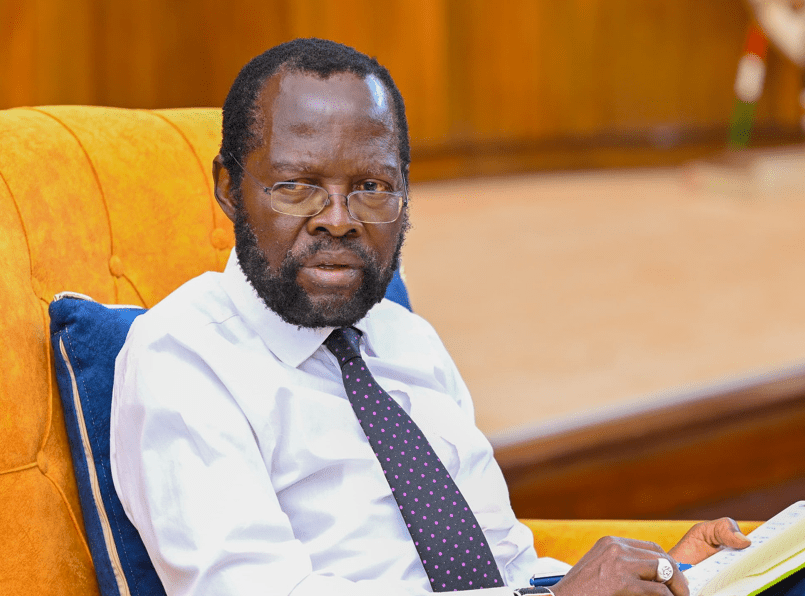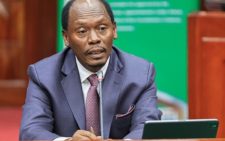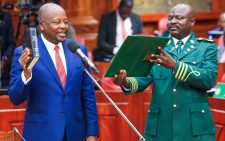Hard times ahead as country stares at possible recession

Kenyans should brace for hard times with economists agreeing that country could either be in a recession or is headed to one.
The experts say that the three-pronged attack of the Covid-19 pandemic, the war in Ukraine and climate-related shocks left permanent damages to Kenya’s economy.
Now that both the Eurozone and US are also headed into a recession, it means Kenyans should tighten their belts because the two are the country’s key trade partners. When economies get depressed, they impact local commercial and financial activities but also hit diaspora remittances hard.
A recession is a period of temporary economic decline, during which trade and industrial activity are reduced and is generally identified by a fall in the country’s Gross Domestic Product (GDP), in two successive quarters.
Wesley Manambo, an analyst with investment bankers, Genghis Capital, told People Daily that there are indicative signs that Kenya is hurtling into a recession if it isn’t in one yet.
“We are headed for one, even as the global market brace for one,” Manambo said adding: “Signs are things like high-interest rates, investors buffing up their liquidity positions and a general slow-down in (economic) activity.”
Market value
The country’s gross domestic product (GDP) – which is the total monetary or market value of all the finished goods and services produced within a country’s borders in a specific time period has declined for three straight quarters since last year, recording 7.4 per cent in the last quarter of 2021 from 9.3 per cent the previous quarter.
The decline continued in the first quarter of 2022 to 6.8 per cent and 5.2 per cent in the second quarter of 2022.
Speaking to the media recently, Treasury Cabinet Secretary Prof Njuguna Ndungu said that Kenya was in a recession, warning that Kenya has no “headroom for debt” hence the painful austerity measures including an ongoing Sh300 billion budget cut.
“When you are buffeted by multiple shocks, the reaction is actually to use the resources to overcome the crisis,” he said.
But concerns abound that austerity measures, rather than promoting growth, are sometimes self-defeating as cuts in government spending lead to a fall in demand and eventually a drop tax revenues.
In this case a reduction in public deficits fades away.
Kenya’s public debt hit Sh8.7 trillion in September amid attempts to chop non-essential spending, as new Sh37.9 billion debt increased borrowings from Sh8.66 trillion in August. The government borrowed Sh122.04 billion or Sh1.36 billion daily, with most of the money being mopped up from the local market.
Ndungu says the State has had discussions with the International Monetary Fund (IMF) and in trying to see how to save lives by cutting spending on non-essentials.
“These are the issues that we are already looking at, so essentially, they are not issues that will affect the aggregate demand because essentially we have to protect that in times of a recession,” says Ndungu.
Failed rains
The country is currently going through a food insecurity crisis with drought affecting an estimated 4.5 million Kenyans, due to four consecutive seasons of failed rains and increased commodity prices, says Kenya Bankers Association Chief Executive Officer and Federation of Kenya Employees (FKE) President Habil Olaka.
“We continue to see a rise in inflation month on month, driven by runaway costs of consumer products, including cooking gas, fuel, food and cooking oil. The war in Ukraine and other global geopolitical developments continue to worsen the situation,” Olaka said.
The East African Economic Outlook, African Development Bank (AfDB) said last week that Kenya’s economic growth will recover at a slower rate of 6.7 per cent driven mainly by the reopening of the global economies after a three-year meltdown, attributing the slowdown to the lingering effects of Covid-19, the the Russia-Ukraine war, climate change and devastating locust invasion, together with regional conflicts.
The regional bank’s outlook says Kenya’s economy as experiencing heightened inflationary pressure, particularly on food and fuel, leading to a rising cost of living.
AfDB’s Director General for East Africa Nnenna Nwabufo, said rising fuel prices in Kenya which has averaged Sh180 per litre of petrol has led to a hike in cost of production, resulting in high food costs.
Nwafubo warned that the vulnerability of Kenya to the impact of climate change effects such as drought and flooding could further hold back the region’s fragile recovery.
“This calls for urgent policy measures to build macroeconomic resilience including through diversifying economies to withstand shocks,” Nwabufo said in the bank’s latest report on “Supporting Climate Resilience and a Just Energy Transition”.
To reign in the pressures, the Central Bank of Kenya’s (CBK) Monetary Policy Committee (MPC) continues to raise its Central Bank Rate (CBR). Last week, the committee raised the rate from 8.25 per cent to 8.75 per cent. In tune with the anchor rates, various commercial banks have already increased their lending rates by up to 1.1 percentage points effective from the end of November 2022. The an












